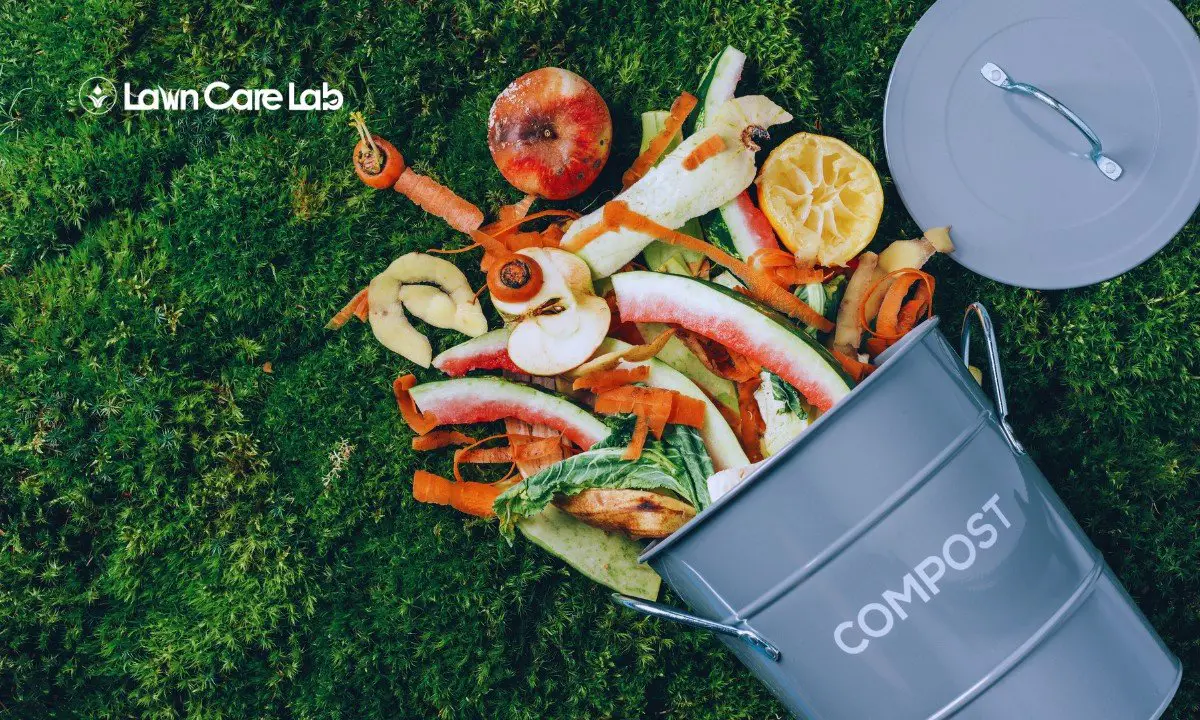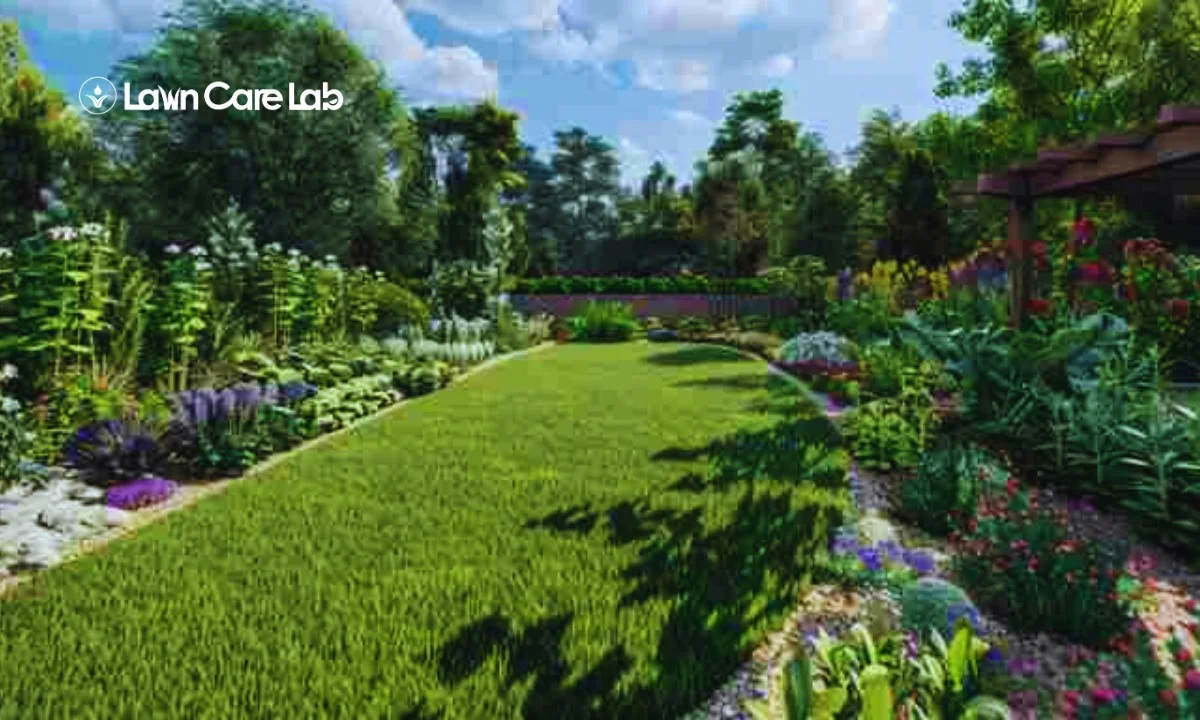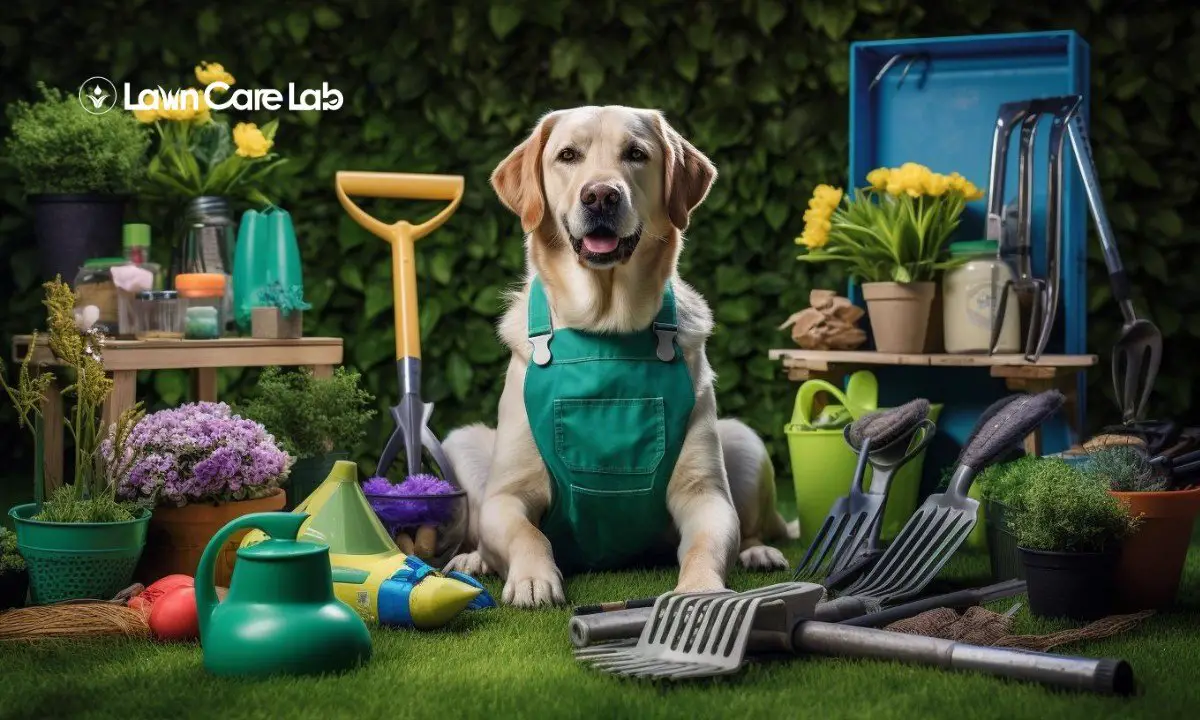Ever discarded kitchen leftovers into the garbage without thinking twice? What if I told you that those scraps could be the secret ingredient for a flourishing garden? Enter composting, an uncomplicated, green method to convert domestic waste into a fertile garden supplement.
Let me help you start home composting, select waste materials, manage issues, and use compost effectively. It’s a simple practice that enhances lawn health and the environment.
Remember, transitioning to composting is not just a choice, it is imperative for our planet’s health and wellbeing.
Table of Contents
Understanding the Basics of Composting
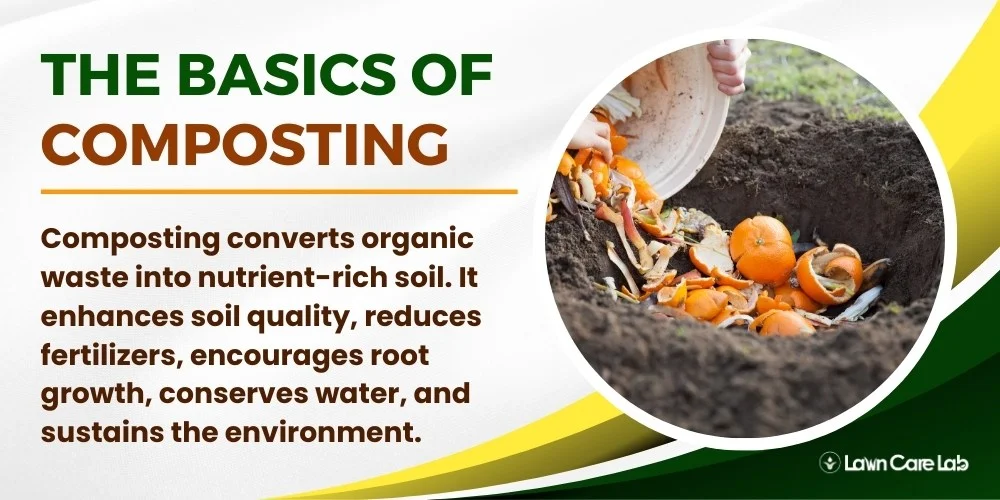
Composting is nature’s recycling scheme that converts organic waste into a nutrient-rich soil conditioner.
It requires a balance of ‘green‘ and ‘brown‘ materials, moisture, and aeration. Composting creates a sustainable cycle of growth, decay, and regeneration. Composting positively impacts your lawn.
Benefits of Composting for Your Lawn
Composting is an organic soil enhancer that encourages root growth, reduces the need for synthetic fertilizers, and enhances the aesthetics of your lawn.
It conserves water, safeguards water systems from harmful runoff, and fosters strong root growth.
Composting is an investment in your lawn’s overall health and aesthetics and contributes to environmental sustainability.
Enriches Soil Quality
Composting domestic waste enhances soil vitality. Nutrient-rich compost fortifies soil fertility and nourishes lawns.
| Advantages of Composting | Explanation |
| Nutrient Dispensation | Gradual release of nitrogen, phosphorus, and potassium |
| Soil Texture | Improves the soil’s capacity to retain water and air |
| Erosion Inhibition | Compost aids in binding soil particles |
| Vigorous Root Growth | Better soil texture stimulates healthy root development |
Use composting as a tool for ecological and economical gardening, nurturing your soil into a living, thriving entity.
Reduces the Need for Chemical Fertilizers
Composting enriches soil and promotes plant growth, reducing the need for harmful synthetic fertilizers. It also saves money and helps the environment.
From this perspective, it’s evident that transitioning to composting can yield considerable benefits for both your garden and the wider ecosystem.
Types of Waste Suitable for Composting
Composting can turn your household waste into nutrient-rich soil for your garden. It’s an easy way to contribute to a healthier planet from your backyard.
Green Waste
Add vegetable peels, coffee grounds, and grass clippings to your compost pile to speed up the decomposition process and create nutrient-rich soil fertilizer.
Nevertheless, Composting requires discernment. Avoid items like meat, dairy, and diseased plants that attract pests and cause unpleasant odors. It’s a science that requires a clear understanding of what to include or exclude.
When managed meticulously, your green waste can morph from kitchen remnants into nutrient-rich soil enhancers, fostering a more robust and vibrant garden.
Brown Waste
Brown waste like dry leaves, straw, paper, and wood chips is great for gardens. It provides carbon for compost and helps maintain moisture balance.
Adding brown waste also promotes aeration and prevents unpleasant odors.
Composting is a sustainable way to recycle waste into nutrient-rich compost for your garden. Watch out for harmful chemicals in paper or wood products.
Step-by-Step Guide to Start Composting at Home
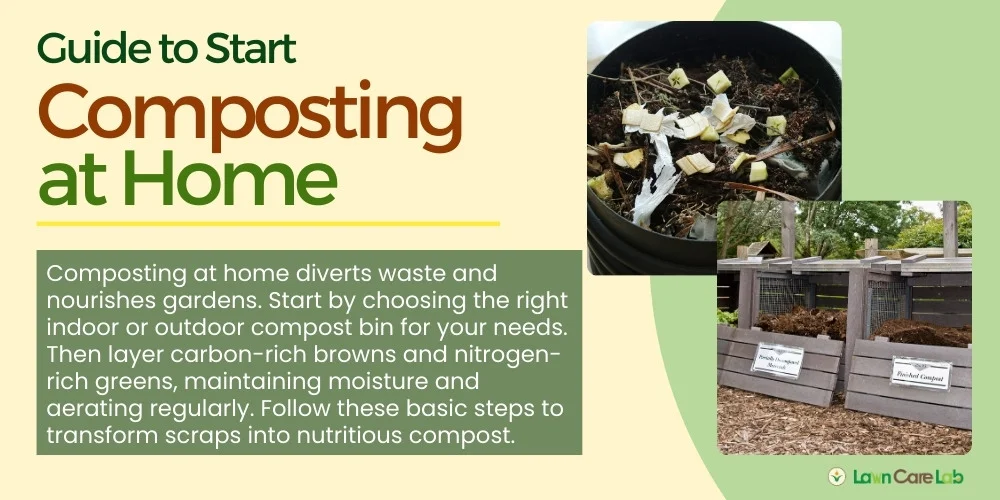
Composting organic waste at home is a sustainable way to nourish your garden. Follow this beginner’s guide to get started with the right tools, layering methods, and maintenance tips.
Choosing the Right Compost Bin
Choosing the right compost bin is vital for successful home composting. Indoor compost bins are perfect for compact spaces, while outdoor compost bins or piles are ideal for larger outdoor spaces.
Indoor bins work well for kitchen scraps in compact homes. Opt for ceramic or stainless steel bins with charcoal filters to control odor.
For larger volumes, use outdoor wooden or plastic bins. Ensure adequate ventilation and drainage. Place it on flat ground in partial shade.
Layering Your Compost
To compost at home, you need to understand layering. It helps balance carbon and nitrogen, introduces beneficial microorganisms, and manages odors and pests.
Here’s a foolproof layering strategy for you:
- Start with a 3-4 inch brown base layer like dried leaves or twigs to provide carbon.
- Next, add a 3-4 inch green layer with food scraps and grass clippings for nitrogen.
- Sprinkle a thin layer of garden soil or finished compost to introduce beneficial microbes.
- Repeat the brown, green soil sequence until the pile reaches 3-4 feet tall.
Layering your compost pile is a simple and efficient technique that transforms waste into valuable garden compost.
Maintaining Your Compost Pile
Use a pitchfork weekly to aerate the pile for uniform breakdown. The contents should feel moist, like a wrung-out sponge. Add water or dry items accordingly.
Turning and moisture control prevent odors and speed up the natural decomposition, yielding rich nutritional compost for your garden in 4-6 months.
With the right tools and a bit of care, it’s easy to compost at home. Try today for a sustainable way to reduce waste!
Troubleshooting Common Composting Problems
Composting can face issues like dryness, dampness, improper aeration, or material imbalance. Knowing how to tackle these can help in effective composting and reduce environmental pollution.
Compost Pile is Too Dry or Too Wet
Correcting prevalent composting issues, such as excessively dry or damp compost piles, is key to avoiding subpar compost.
Here’s how you can address these moisture inconsistencies:
- Should your compost appear too parched, consider moistening it bit by bit until it resembles a squeezed-out sponge.
- To amplify moisture, incorporate green items such as leftovers from fruits and vegetables.
Add dry brown materials like leaves, straw, or shredded paper to moist compost for better aeration and moisture balance. Mix regularly for ideal moisture conditions.
Compost Pile is Smelly
Is the compost pile smelling bad? Imbalance or a lack of aeration is probably the issue.
Allow me to guide you through these issues, one by one:
| Issue | Root Cause | Rectification |
|---|---|---|
| Pungent Ammonia Odor | Excessive green materials | Introduce brown materials and stir the pile |
| Rancid Egg Smell | Oxygen deficiency | Stir the pile to enhance aeration |
| Sweet, fruity scent | The compost pile is overly dry | Introduce water and green materials |
| Absence of smell | The pile is overly dry or cold | Add water and green materials, or insulate the pile |
Following this, we’ll discuss optimal compost utilization to enrich your lawn’s nutrition.
How to Use Your Compost for Lawn Nutrition
Composting is a sustainable way to nourish your lawn. Spread compost or brew compost tea to provide necessary nutrients and improve soil structure. It also reduces the need for chemical fertilizers, creating a safer space for you and local wildlife.
Direct Application
Utilizing compost to feed your lawn is a simple, eco-friendly method that can be easily mastered.
- Begin the process by spreading a thin layer of compost directly over your lawn.
- Employ a broadcast spreader to ensure the compost is distributed evenly.
- Ideal seasons for this activity are early spring following aeration or the fall before the lawn enters its winter slumber.
- Strive for a layer of compost that’s a quarter-inch thick, ensuring not to over-fertilize.
- As time passes, the compost naturally filters down, serving as a nutritious dressing for the topsoil.
This method improves soil’s ability to retain nutrients and moisture, benefiting grassroots.
Backed by scientific research, it transforms household waste into nutritious compost, promoting a lush lawn.
Remember, the key to a thriving lawn is soil nutrition. Compost is the secret ingredient.
Making Compost Tea
Compost tea is a potent liquid fertilizer that can boost your lawn’s nutrition. To make it, use a pump to circulate air through mature compost submerged in water. This draws out beneficial microbes and nutrients.
Here is a concise guide to the process:
| Steps | Description |
|---|---|
| 1. Assemble Your Resources | Mature compost, water, pump |
| 2. Initiate Brewing | Initiate air circulation through compost immersed in water |
| 3. Keep a Watchful Eye | Track duration, temperature, and pH levels |
| 4. Dispense | Spray on lawn or infiltrate into the soil |
Compost tea boosts lawn health by enriching the soil, increasing mineral absorption, and promoting disease resistance.
Conclusion
Composting is more than just an eco-conscious act; it’s a boon to your lawn. By converting your domestic waste into compost, you contribute to a sustainable cycle that yields potent, organic fertilizers for your lawn.
Composting is a journey of learning what can be composted, resolving any issues, and creating nutrient-rich compost for your lawn’s transformation.
Composting reduces waste and improves lawn health. “A single act of kindness throws out roots in all directions, and the roots spring up and make new trees,” said Amelia Earhart.
Therefore, consider composting today; it’s a kind act to your lawn that will yield lush, healthy results.
- Special Considerations and Techniques for Maintaining Sloped Lawns - July 15, 2024
- How Green Spaces Influence Community Interactions - July 8, 2024
- Lawn Fungal Diseases: Identification and Treatment - July 3, 2024

